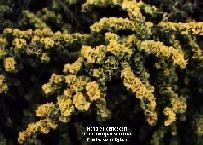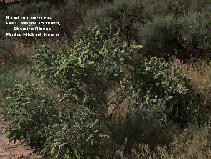

Fourwing Saltbush
Atriplex cansescens (Pursh) Nutt.
Perennial, evergreen shrub is from 4 to 7 feet tall. There are narrow, lance-shaped, gray-green leaves are 1 to 2 inches long. The rigid, brittle main stems are gray, while the younger stems are whitish. It has male and female flowers on separate plants. Male flowers are borne in dense spikes and are each very small each with five sepals fused together in the base into a cup. The female flower lacks septals, and there are two small, united bracts which enclose the pistil. The Fourwing Saltbush grows on sandy soils and can be found in sand dune areas. It can also be found in denser soils. It very widely distributed throughout the Intermountain area.
Edible Uses:
Leaves may be eaten raw or cooked or raw. It
has a very acceptable taste with a salty tang. The leaves can be used at any
time of the year though winter harvesting must be light because the plant is not
growing much at this time of year. Seeds are - cooked and ground into a powder,
mixed with cereals and used in making cakes etc or used as a piņole. The
ground up seed can also be mixed with water and drunk as a refreshing beverage.
The burnt green herb yields culinary ashes high in minerals and the ashes can be
used like baking soda.
Medicine:
The leaves can be made into a soapy lather and used as a wash
on itches and rashes such as chickenpox. A poultice of the crushed leaves can be
applied to ant bites to reduce the pain and swelling.
Value for Wildlife:
Fourwing saltbush is a valuable browse for many wildlife species. However,
significant variation exists in palatability and nutritional levels of
individuals and populations of fourwing saltbush. Fourwing saltbush generally
provides good deer browse during all seasons and is used by elk in winter.
Pronghorns may feed on this shrub to some extent during all seasons of the year.
Fourwing saltbush is a preferred browse of many rabbits and small mammals. Seeds
are readily eaten by upland game birds, small non-game birds, and rodents.
Fourwing saltbush is palatable to pronghorn, and deer in all seasons, and to elk
in fall and winter. However, palatability varies seasonally and annually. Seeds
and, in some instances, foliage are also preferred by many species of upland
game birds, small non-game birds, rodents, and lagomorphs. (Source)
